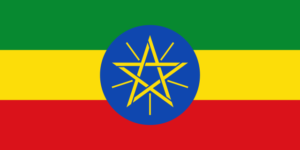
Region: Africa
Disability Definition
Ethiopia’s legislation and policies approach disability with a medical model, “a person who is unable to see, to hear to speak or suffering from injuries to his limbs or from mental retardation, due to natural or manmade causes; providing however, the term does not include persons, who are alcoholic, drug addicts and those with psychological problems due to socially deviant behaviors.”
Legislation
Ethipioa has the following disability legislation:
Right to Employment of Persons with Disability Proclamation No. 568/2008: The only proclamation of the FDRE that exclusively talks about disability rights; protecting the rights of persons with disabilities to employment and prohibits discrimination.
National Plan of Action on Disability: Meant to “address specific priorities during the implementation to overcome barriers to equality of opportunity and the full participation of persons with disabilities in society.”
Employer Legal Requirements
The Proclamation concerning the Rights to Employment for Persons with Disabilities, No. 568/2008: “voids any law, practice, custom, attitude and other discriminatory situations that limit equal opportunities for persons with disabilities. It requires employers to provide appropriate working and training conditions; take all reasonable accommodation measures and affirm active actions, particularly when employing women with disabilities; and assign an assistant to enable a person with disability to perform their work or follow training.”
Accessibility Requirements
Building Proclomation No. 624/2009: “Any public building shall have a means of access suitable for use by physically impaired persons, including those who are obliged to use wheelchairs and those who are able to walk but unable to negotiate steps.”
Framework Document 2009: “provides for Special Needs Education in Technical and Vocational Education and Training (TVET).”
Cultural Norms
The National Plan of Action of Persons with Disabilities (2012-2021) “aims at making Ethiopia an inclusive society. It addresses the needs of persons with disabilities in Ethiopia for comprehensive rehabilitation services, equal opportunities for education, skills training and work, as well as full participation in the life of their families, communities and the nation.”
Reference: wcms_112299.pdf (ilo.org)
Business Practices/Examples
Additional content coming soon.Insights
Based on data from UNICEF’s 2018 survey, it is estimated that 7.8 million people in Ethiopia are living with some form of disability, which is approximately 9.3 percent of the country’s total population.
Supplier Diversity
Additional content coming soon.Talent Sourcing Resources
Additional content coming soon.Additional Resources
Ethiopian Center for Disability and Development (ECDD) – Working with other organizations to promote disability inclusive development throughout Ethiopia.
Ethiopian National Disability Action Network (ENDA) – A non-profit comprised of 26 organizations, that wants to empower members to “design and implement their own programs in a better and coordinated manner and thereby to bring changes in their respective targeted communities.”
References
National Plan of Action of Persons with Disabilities
International Labour Organization – Inclusion of People with Disabilities in Ethiopia
